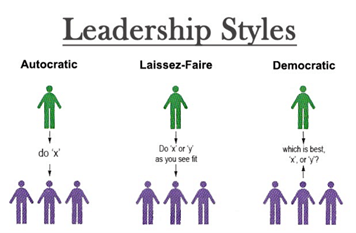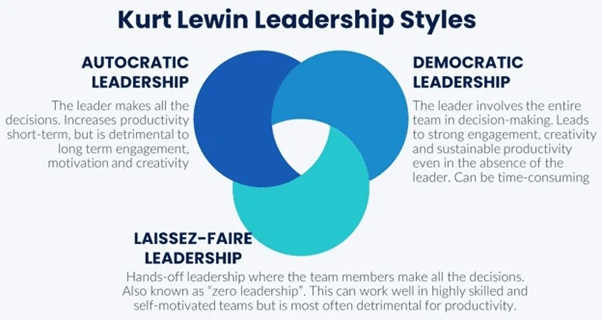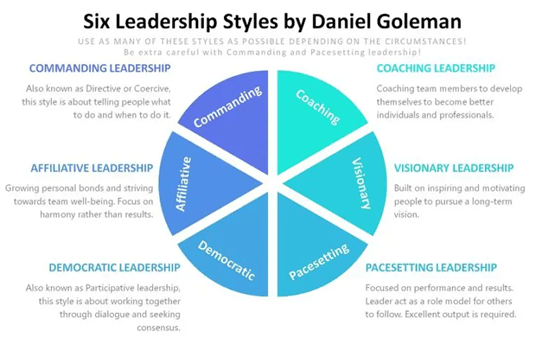
What type of leader are you? Identify your style
Leadership is more than just making decisions. It is a practical skill that can motivate, influence and guide individuals, teams and organisations beyond what they would dream possible. Whether you represent a small business, sports team, or global organisation, the leadership style that you follow will ultimately have an enormous impact on the overall performance.
Leadership styles:
Kurt Lewin identified three types of leaders in business:
- autocratic,
- democratic and
- laissez-faire
Rather than trying to discover a leadership style that fits you or reflects your behavior or personality, you should aim to adopt the best leadership style for the scenario at hand. The strategic decision would imply that you choose which style to adopt on purpose rather than reacting to events emotionally and spontaneously.
“The best leaders don’t know just one style of leadership – they’re skilled at several, and have the flexibility to switch between styles as the circumstances dictate” – Daniel Goleman
Lewin’s leadership styles:

Autocratic leaders make all the decisions themselves and don’t allow or accept much input from team members. They follow a command-and-control approach and make decisions on behalf of a team, group or organisation with minimal consideration or input from other members of the group.
Democratic leaders rely on the group or team members to participate in the decision-making process. It’s an inclusive approach that considers the needs of others before action is taken. The decision is made based on general consensus of the majority of the team members.
Laissez-faire leaders entrust their team members to make decisions that are in the best interest of the team. It’s a French term that means “Leave alone” – which points to members having complete autonomy over their decision making with little to no involvement from the leader/manager.
Benefits of Lewin’s leadership styles:

Daniel Goleman’s leadership styles
Kurt Lewin’s leadership styles were defined in the 1930’s. Since then, huge amounts of research, time and effort has been spent on refining leadership styles to maximise productivity, inclusivity and to foster creative thinking and problem solving. Additional to LEwn’s leadership styles, Daniel Goleman from Harvard Business review elaborates and points out 6 leadership styles. The below image briefly defines each leadership style.

A good approach to determine which style to employ, how to apply it, and then how to execute it, is by using Daniel Goleman’s four Emotional Intelligence competencies. It’s important to mention that each of these styles should be employed differently and to varying degrees. Goleman points out that “leaders need an inner focus to be aware of their own feelings, values and intuitions, and to manage themselves well. A focus on others allows a leader to read people well, which is key to managing relationships – the art of leading itself”.
The emotional intelligence competencies are:
- Self-awareness
- Self-regulation
- Self-motivation
- Empathy
Self-awareness
Self-awareness is defined as the capacity to pay attention to your own emotional state in any scenario, analyse it effectively, and apply what you learn to better shape future actions. Assume you are enraged. A self-aware individual will recognize not only that they are furious, but also the source of their anger, and will utilize this information to choose their next course of action.
Self-Regulation
Self-regulation allows you to choose the emotions you want to feel at any given time and in any given scenario. This approach takes a lot of practice and a lot of self-discipline to perfect, but once you do, you’ll be able to take control of your emotions and stop being someone else’s emotional victim because you and you alone will be in charge of your emotional reaction. Self-regulation is more than simply suppressing unwanted feelings. It’s a hands-on approach that requires loads of practice and concentration.
Self-Motivation
Self-motivation allows you to use your emotions to affect positive change in your life through dedicated pursuit of your goals, no matter the obstacles in your way. This process requires you to employ your emotions toward near-complete positivity, optimism, confidence, and persistence. It is essential that you release the negative emotional reactions to achieve self-motivation.
Empathy
Empathy is the ability to understand and experience what another person is going through, as well as to see and feel life through their eyes. This helps you to analyse their emotional condition rationally and efficiently, as well as how to best steer them to a state of positivity and optimism.
Conclusion:
Both Lewin and Goleman are very respected in their fields of expertise. Consider each of the leadership styles carefully, think about in which scenarios at your work environment you can identify the different approaches. Once you’ve defined the prevailing leadership style in your team, group or organisation, it’s time to assess the style that would benefit the members best.